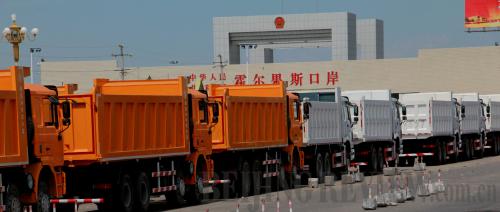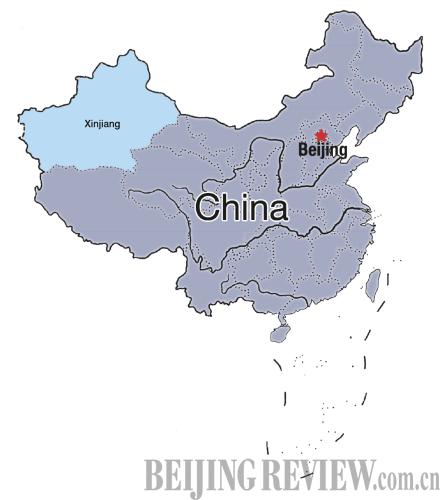|
 |
|
SUMMER HARVEST: Farmers harvest wheat in Qitai County, Xinjiang Uygur Autonomous Region, on July 19 (JIANG WENYAO) |
Last November, Tian, 36, was appointed his current position and came to Xinjiang for the first time.
"In the next three years, our Xinjiang branch will definitely have more output than our headquarters in Shaanxi, because the newly-built branch is our second largest integrated truck manufacturing base with all workshops. We expect that a new truck will be assembled every six minutes on the production line," Tian said.
SAG does not overlook the importance of the Xinjiang market. In 2011, SAG sold 120,000 commercial vehicles with sales revenue of 31 billion yuan ($4.88 billion). In Xinjiang, SAG ranks first in truck sales, holding 65 percent of the market.
"The new branch in Urumqi marks a milestone of SAG's development. SAG is the first truck producer in Xinjiang. We will not only meet local market needs, but also sell trucks to Central Asian and Russian markets. Last year, we exported 10,000 trucks to overseas markets," Tian said.
But Xinjiang lacks skilled workers and high-caliber engineers in heavy truck production. For this reason, Tian has made up his mind to work in Xinjiang for a long time.
"In view of SAG's grand plan, I will probably work in Xinjiang until retirement. My family will move to Urumqi next year," Tian said.
When asked why he is willing to work in the remote city more than 2,500 km from his home in Xi'an, he replied, "Xinjiang is a promising place for business to grow. There's a bright future here, and it's my pleasure to contribute to the prosperity of Xinjiang."
 |
|
TRADE PORT: A line of trucks newly bought by foreign clients from China wait to clear customs in Horgos Port, bordering Kazakhstan, in Xinjiang Uygur Autonomous Region, on June 10 (WANG KUIPING) |
In the past decades, governments at all levels in China have been making greater efforts to spread the benefits of economic growth to more people, and place greater priority on improving the living standard of middle- and low-income groups and keeping a balanced development.
The Xinjiang Regional Government is fully aware of the importance of livelihood improvement. Many places in Xinjiang are located near borders or remote mountains, which are still underdeveloped. Based on the local conditions and resources, Xinjiang has carried out a plan to enrich remote border areas and promote local people's livelihood in the 12th Five-Year Plan period.
Last year, Xinjiang invested 78.3 billion yuan ($12.31 billion) in 2,886 projects covering housing, transportation, agriculture, electricity and irrigation works in border areas. A number of counties and towns are allowed to carry out pilot industrial development programs according to their conditions. For example, companies are encouraged to contract with farmers in Altay for supplying agricultural products in the long term. The companies have thereby attained a steady supply source while farmers can enjoy a steady income without fear that their products will go unsold.
Apart from agriculture, tourism is also a priority in Xinjiang's development. Xinjiang is attractive to tourists not only for its colorful landscape but also unique cultural features. In recent years, local people have paid much attention to protecting ethnic traditions in the midst of the tourism boom. Especially in some ethnic habitats, such as Altay that has a major Kazak population, traditional culture and handicrafts are the main tourist attractions. Tourists can take in charming natural scenes while experiencing a nomadic life never seen in cities.
With more investment, transportation and other infrastructure have been developing rapidly in Xinjiang. Today, the region has become a hotspot for trade and business, allowing all sectors of the economy to develop in an integrated and sound way.

Email us at: baishi@bjreview.com
| 